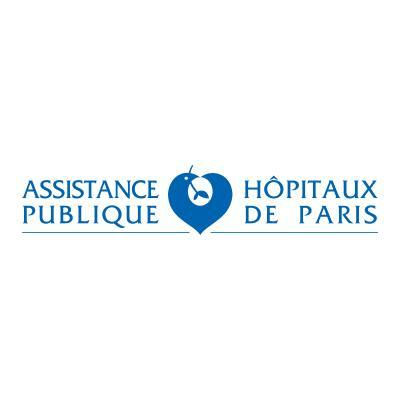预约演示
更新于:2025-07-15
Spiramycin
螺旋霉素
更新于:2025-07-15
概要
基本信息
原研机构- |
权益机构- |
最高研发阶段批准上市 |
首次获批日期 法国 (1955-02-08), |
最高研发阶段(中国)批准上市 |
特殊审评孤儿药 (美国)、孤儿药 (日本) |
登录后查看时间轴
结构/序列
分子式C43H74N2O14 |
InChIKeyACTOXUHEUCPTEW-CEUOBAOPSA-N |
CAS号24916-50-5 |
关联
5
项与 螺旋霉素 相关的临床试验NCT01189448
Multicenter, Randomized Clinical Trial to Compare the Efficacy and Tolerance of Prenatal Therapy With Pyrimethamine + Sulfadiazine vs Spiramycine to Reduce Vertical Transmission of Toxoplasma Gondii Following Primary Infection in Pregnancy
Background : When a mother contracts toxoplasmosis during pregnancy, the parasite may be transmitted from to her unborn child. This results in congenital toxoplasmosis, which may cause damage to the eyes and nervous system of the child. To date, no method has been proved effective to prevent this transmission. In France, spiramycin is usually prescribed to women who have toxoplasma seroconversion in pregnancy, however its efficacy has not been determined. The standard treatment for toxoplasmosis is the combination of the antiparasitic drugs pyrimethamine and sulfadiazine, but this strategy has not been evaluated for the prevention of mother-to-child transmission.
Purpose : Randomized phase 3 trial to determine whether pyrimethamine + sulfadiazine is more effective than spiramycin to prevent congenital toxoplasmosis.
Purpose : Randomized phase 3 trial to determine whether pyrimethamine + sulfadiazine is more effective than spiramycin to prevent congenital toxoplasmosis.
开始日期2010-11-01 |
IRCT20170201032346N5
The effect of spiramycin in prevention of toxoplasma gondii infection from mothers with acute toxoplasmosis
开始日期2007-09-23 |
申办/合作机构- |
NCT00004317
Phase IV Randomized Study of Pyrimethamine, Sulfadiazine, and Leucovorin Calcium for Congenital Toxoplasmosis
RATIONALE: Congenital toxoplasmosis is an infection caused by the parasitic organism Toxoplasma gondii, and it may be passed from an infected mother to her unborn child. The mother may have mild symptoms or no symptoms; the fetus, however, may experience damage to the eyes, nervous system, skin, and ears. The newborn may have a low birth weight, enlarged liver and spleen, jaundice, anemia, petechiae, and eye damage. Giving the antiparasitic drugs pyrimethamine and sulfadiazine is standard treatment for congenital toxoplasmosis, but it is not yet known which regimen of pyrimethamine is most effective for the disease.
PURPOSE: Randomized phase IV trial to determine which regimen of pyrimethamine is most effective when combined with sulfadiazine and leucovorin in treating patients who have congenital toxoplasmosis.
PURPOSE: Randomized phase IV trial to determine which regimen of pyrimethamine is most effective when combined with sulfadiazine and leucovorin in treating patients who have congenital toxoplasmosis.
开始日期2000-07-01 |
100 项与 螺旋霉素 相关的临床结果
登录后查看更多信息
100 项与 螺旋霉素 相关的转化医学
登录后查看更多信息
100 项与 螺旋霉素 相关的专利(医药)
登录后查看更多信息
1,630
项与 螺旋霉素 相关的文献(医药)2025-08-01·EUROPEAN JOURNAL OF PHARMACEUTICAL SCIENCES
NDMA in macrolides: GC-MS/MS method for its detection and study of its formation
Article
作者: Roškar, Robert ; Golob, Nejc ; Grahek, Rok
N-nitrosodimethylamine (NDMA) is the most commonly found N-nitrosamine in pharmaceutical drug substances (DSs) and drug products. This paper investigates the potential of macrolide antibiotics, containing dimethylamino group, as precursors for NDMA formation in pharmaceuticals. A direct injection GC-MS/MS method was qualified for the quantification of NDMA in various macrolide DSs and film-coated tablets, and the use of pyrrolidine as a scavenger was further emphasized. As an alternative method, GC-MS/MS method with solid phase microextraction was tested, which proved to be unsuitable due to the limited water solubility of macrolides. However, its applicability was confirmed for the analysis of NDMA in water-soluble DSs, such as metformin. The observations regarding the solubility can be applied to a wide range of drug products and analytical methods for the accurate determination of nitrosamines. Various macrolide DSs showed significant levels of NDMA, confirming macrolides as NDMA precursors. In macrolide film-coated tablets, NDMA traces of up to about 70 ppb and 165 ppb were found in azithromycin and spiramycin, respectively, greatly exceeding the acceptable intake limit for NDMA. These findings confirmed the potential of macrolides for NDMA formation which was further enhanced in spiramycin that contains two dimethylamino groups. Furthermore, it has been shown that a stable DS form can successfully prevent NDMA formation, as observed with azithromycin dihydrate. The NDMA content in macrolides can also increase significantly during storage as shown in an accelerated stability study, which together with the levels above the AI limits highlights the need for greater attention and consideration.
2025-08-01·JOURNAL OF ETHNOPHARMACOLOGY
Eucalyptus torquata: Chemical profiling and the therapeutic potential of its buds extract against Toxoplasma gondii infection in mice
Article
作者: Mahdi, Ismail ; Said, Nelly M ; Mahmoud, Mona F ; Abdelfattah, Mohamed A O ; Sobeh, Mansour ; Abdel Hamed, Enas F ; Drissi, Badreddine
ETHNOPHARMACOLOGICAL RELEVANCE:
Toxoplasma gondii is a protozoan parasite that infects many warm-blooded animals, including humans. The genus Eucalyptus has been used for centuries, particularly in traditional medicine, for its antimicrobial and anti-inflammatory properties.
AIM OF THE STUDY:
The phytochemical composition of Eucalyptus torquata buds extract was profiled and its potential to mitigate toxoplasmosis-related symptoms, counter histopathological insults, and inhibit cyst development in a mice model were investigated.
MATERIALS AND METHODS:
HPLC-MS/MS was used to identify and annotate the phytochemical contents. Protective effects against acute and chronic toxoplasma infection were evaluated. Several biochemical parameters were tested, including AST and ALT, along with histopathological and immunohistochemistry assays. Molecular docking was utilized to pinpoint the compounds associated with the anti-toxoplasmosis activity.
RESULTS:
HPLC-MS/MS analysis revealed that the plant extract contained 61 secondary metabolites belonging to various polyphenols and organic acids. Administration of E. torquata extract at 200 and 400 mg/kg/day for 14 consecutive days to mice initially infected with T. gondii ME-49 strain significantly prolonged the survival time compared to the untreated and spiramycin-treated groups. In addition, the extract, especially at 400 mg/kg, reduced the brain cyst burden (53 % and 75 %) and viability (38 % and 43 %), and decreased animals' mortality rates in both acute (48th-day post-infection) and chronic (64th-day post-infection) phases. Monitoring liver and renal function revealed that the extract counteracted the infection-induced damage. It significantly reduced AST, ALT, and creatinine levels and increased the serum albumin level compared to the untreated mice. Furthermore, the extract-treated mice groups showed a substantial reduction in neuron degeneration, hepatic necrosis, and the associated inflammatory signs. Immunohistochemical analyses of the cytoplasmic inducible nitric oxide synthase (iNOS) in brain and liver tissues showed that both the extract and spiramycin elicited significant decreases in iNOS expression in acute and chronic phases. Molecular docking suggested that epigallocatechin-epigallocatechin, gallic acid coumaroyl gallate, gallic acid shikimate, and galloyl diglucose had the most favorable binding affinities towards iNOS enzyme.
CONCLUSION:
Altogether, these findings open a promising avenue into the potential role of E. torquata phytochemicals in managing toxoplasmosis and the related complications.
2025-04-29·Cureus Journal of Medical Science
Subgingival Prevalence and Antibiotic Susceptibility of Selenomonas noxia
Article
作者: Hawley, Charles E ; Rams, Thomas E ; Whitaker, Eugene J
Background Selenomonas noxia is a putative periodontal pathogen in subgingival biofilm communities. This study compared the subgingival prevalence and levels of S. noxia in those with severe periodontitis and those with periodontal health and assessed the in vitro antibiotic susceptibility of the species. Methods Subgingival biofilm samples from 206 adults with stage III (severe) periodontitis and 48 adults with periodontal health were examined with an S. noxia-specific whole chromosomal nucleic acid probe. Minimum inhibitory concentration (MIC) values of six antibiotics against S. noxia were determined in vitro with antibiotic gradient strips. Results Selenomonas noxia was more frequently detected in patients with severe periodontitis (53.4%) than persons with periodontal health (20.8%) (2.6-fold more frequent, p = 0.0001, Fisher's exact test). Heavy subgingival colonization by S. noxia (≥106 cells/subject subgingival specimen) was also more frequent in persons with severe periodontitis (16.0%) than those with periodontal health (2.1%) (7.6-fold more frequent, p = 0.008, Fisher's exact test). Selenomonas noxia was susceptible in vitro to amoxicillin, azithromycin, clindamycin, doxycycline, and metronidazole (all MIC values ≤ 0.75 mg/L) but resistant to spiramycin (MIC > 32 mg/L). Conclusions Selenomonas noxia was significantly more prevalent at significantly higher subgingival levels in patients with severe periodontitis than adults with periodontal health. However, heavy S. noxia subgingival colonization was present in only a subset of severe periodontitis patients and rarely in those with periodontal health. Selenomonas noxia was susceptible in vitro to several antibiotics of potential therapeutic use in periodontitis therapy, with the exception of spiramycin. Selenomonas noxia may contribute to periodontitis in patients harboring high subgingival numbers of the organism.
7
项与 螺旋霉素 相关的新闻(医药)2025-05-23
编者按恒瑞今日香港上市,E药经理人的视角拉回到数月前这一决策背景:第一,年初恒瑞宣布这一消息时其A股应声下跌,按照公司3000亿市值下跌10%就是300亿蒸发,这显然大于恒瑞赴港融资的金额。资本市场的争议点在于:考虑到港股的长期低估值,恒瑞在港股上市后,是否会拉低A股股价估值?无论恒瑞在哪个市场进行再融资,老股东的权益都面临被摊薄的挑战。但孙飘扬认准的事情就会干,从来不受外部影响。他更不会去计算短期内因为赴港IPO蒸发了多少亿的资金。他说,只要企业有发展,股票总会有人买。道理和执行就是这么朴素而彻底。赴港上市就是为了国际化这个大方向。这彰显了孙飘扬的自信。几个月时间下来,资本市场逐步理解,恒瑞香港IPO定价44.05港元/股,以发行区间最高端定价,募资13亿美元,成为近五年港股医药板块最大IPO。A股市值创造了近三年历史新高。第二,事实上,数月前恒瑞发布赴港上市消息时确实出乎不少人的意料,自2000年A股上市募集了4个亿之后,恒瑞再无其他资本动作,这期间的分红超过了80亿元。资本层面上的“保守”,在过去很长一段时间都是恒瑞的标签,既不融资加杠杆,也不追风去海外“买”产品管线,完全自力更生。显然,从外部环境看这不是一个最佳上市时间,如果是单纯为了资本市场获利,恒瑞在医药创新的黄金期2020年代应该有更大的资本动作,但恒瑞没有。选择现在赴港上市,完全从是企业自身发展节奏考量。第三,所有今天的决策都是历史铺陈下来的。在E药经理人出品人谭勇团队历时五年创作的《恒瑞传》即将出版前夕,我们邀请吕明方先生为图书撰写序言,阐述恒瑞创新发展的关键历程,呈现他眼中对于这一中国医药行业样本企业及其当家人孙飘扬的独特观察。适逢恒瑞医药今日香港挂牌上市这一中国医药行业的里程碑史实,我们独家刊发《孙飘扬印象记》一文,以飧读者。知连云港久矣,知恒瑞制药久矣,知孙飘扬总亦久矣。谭勇和崔昕历时五年,终于用心完成了《恒瑞传》这部对于一家中国医药龙头企业的深度采访和研究的专著,希望我可以写一些文字作为序文。可能因为有些了解和熟悉,反而不知如何下笔。踌躇半天,就从印象记角度讲一些并不完整的片段,以为读者参考。一个人,心无旁骛,一辈子专注在同一家公司,持续做着同一件事,这样的人,一定是特别的自律,特别的沉静,特别的毅力,特别的用心;这样的人,这样的专注,会令人尊敬,也会令人害怕。因为,这种持续的自律、沉浸、毅力、用心,你几乎无法抗拒,时间会偏爱这样的人。孙飘扬就是这样的人。一1997年7月之后,在泰国泰铢贬值渐次蔓延至东南亚国家和地区,引起区域全面爆发的一场亚洲金融危机,对亚洲和全球经济与金融秩序带来了巨大的冲击。泰国正大集团为应对危机,决定出售其在华投资形成的医药资产和业务,其中就有位于连云港的正大天晴药业和位于杭州的正大青春宝药业等,刚刚上市一年多的蓝筹股上市公司-香港上海实业控股有限公司(0363.HK)综合评估后,在1998年控股收购了当时收入和盈利能力最强的正大青春宝。2002年1月我出任上海实业控股CEO后,还兼任了正大青春宝药业的董事长很长一段时间,那是后话。由于地理环境和交通不便等种种原因,历史上的连云港与江苏南部(苏南)经济发达地区不同,其位于经济相对欠发达的北部(苏北),地域口音也较重,小城与盐城、淮安、宿迁、徐州和山东临沂、日照接壤,东临黄海,广阔的海岸线却长达162公里。在这样一个偏安一隅的海港小城,几乎同时涌现了恒瑞医药、康缘药业、豪森制药(上市时更名为翰森制药)和正大天晴等4家在全国医药行业非常有影响的、形成医药企业集群的“连云港现象”,这就不是一个偶然事件了,曾引发全行业的高度关注。除正大天晴成为中国生物制药(01177.HK)的核心企业在香港上市之外,恒瑞医药(600276.SH)、康缘药业(600557.SH)、翰森制药(03692.HK)等3家药企先后在上海和香港独立上市,尤以孙飘扬领军的恒瑞医药不断创新成长,渐成为中国医药行业的标杆企业,持续成为全球制药企业TOP50之一,2021年初市值一度高达6200亿人民币。2008年6月,根据上海市委常委会有关重组上海航空和医药产业的专项决议(其中一项是上海航空与央企的东方航空合并),我受命重组上海实业集团和上海医药集团两大上海国资集团旗下的境内外医药资产,并出任董事长一职。当时,我们对标学习和先后拜访了一批行业领先企业,其中就包括有恒瑞医药、扬子江药业、同仁堂、齐鲁药业、先声药业等,受益良多,至今印象深刻。重组后的上海医药集团通过吸收合并等“三合一”(三家A股上市公司合并成为一家上市公司)的创新方式,先后在上海证券交易所和香港交易所挂牌上市,并在国际资本市场融资20.62亿美元(160.14亿港元),成为当年全球资本市场十大IPO中唯一一家中国企业,2012年并被收入了哈佛商学院编写的全球企业案例,这也是后话。所以唠叨这些后话,是因为感恩人生有缘,因此有了与孙飘扬总的熟识,彼此有了后来许多的往来交流。2018年9月,在纪念中国改革开放40周年之际,由中国化学制药行业协会等10家全国性医药行业专业协会联合组织发起的“中国医药行业40年40人”评选中,我们俩分别荣膺此特别荣誉。特别是2019年之后,我们俩在六年间又先后四次应邀为全国医药行业的企业家科学家投资家的大型会议举行特别对话分享,每次大约一个小时。包括:2019年10月在北京雁栖湖的巅峰对话,现场听众多达2000余人,E药经理人媒体的相关报道阅读量超过3.2万人;2021年12月因为全球新冠病毒疫情此起彼伏不断蔓延的原因,我们的现场对话时间几经调整,最后只能改为在线上进行,吸引了5万多人收看;2023年11月和2024年11月,我们又分别在杭州和成都进行了现场对话。2024年中国医药企业家科学家投资家大会开幕式上,方源资本合伙人、H50创始主席吕明方与恒瑞医药董事长孙飘扬,围绕创新与国际化展开对话我明白,对于忙碌而低调内敛的孙飘扬总来讲,这样“逼迫”他抽出时间来对话,就是一个非常朴素的理由,而这也是我请他挤出时间分享的唯一简单理由,希望一起为行业发展、为新药创新发声,一起做些力所能及的事情,以期引发行业思考,推动行业进步。如果初识孙飘扬总,容易让人觉得他非常低调,没有所谓架子,但言语不多,难免也有些距离感,他不会讲一些虚头虚脑的套话空话,不愿意去接受媒体的访问,也不擅不喜外面一般的热闹交际,如果他认同一个人了,他其实是一个热情的、直率的、真诚的人,是愿意掏心窝的实在人。如果登录恒瑞医药的官网,很少或几乎没有关于孙飘扬的企业新闻报道,甚至他的名字出现的概率也极少,多的却是关于公司研发创新、国际化、产品等实实在在的相关信息内容。他曾经很认真的告诉我,他这一辈子只会做药,他的空闲时间最大的乐趣就是看学术论文,了解新药研发的技术和进展。他说,因为不懂房地产,很多人鼓动他,他却坚持没有去投资;因为不懂互联网商机,很多人劝诱他,他也坚持没有去投资。然而,我知道,当DeepSeek出来,他却义无反顾的在公司推动全面拥抱AI,全面提升企业效率,这个动作在医药行业是非常超前的。二2020年11月,恒瑞医药在连云港举行公司50周年庆典。我特地去了连云港。恒瑞医药的前身是连云港制药厂,原先是一家创立于1970年的地方国企,最初隶属于当地的街道办事处,主要生产红药水、紫药水和普通抗生素等生产技术含量较低的一般仿制药,利润微薄且市场竞争激烈,一度濒临倒闭的困境。明智的地方医药主管部门为破解困局,鼓励属下企业启用一批年轻人担任管理者。毕业于南京药学院(后合并南京中药学院更名为中国药科大学)的孙飘扬,此时已经在工厂默默无闻的待了几年,勤勤恳恳的做着普通的技术员。时来运转的他受命担任了副厂长。1990年,32岁的孙飘扬被任命为厂长,正式接手了连云港制药厂。当时全厂300多名员工,帐面利润只有8万元。孙飘扬开始做厂长的时候,中国的医药行业刚刚从计划经济状态下的卖方经济转为买方经济,竞争的原因导致药品价格降得很厉害,许多药企都处于亏损状态。“我是搞技术出身的,我当厂长时开始看财务报表,天天算账就是如何让公司可以维持下来。那时候厂里生产的都是很普通的螺旋霉素、红霉素等,一片卖一分钱,赚一厘钱,累死也无法改变现状。人不能被憋死,总是要寻找出路,于是就开始探索做所谓的‘新药’(现在叫仿制药)。我想办法挤出钱。”当年厂里一台老厂长留下的老旧面包车,开在路上常常会抛锚,孙飘扬优先考虑的不是去换台新车,尽管公司跑业务非常需要,他还是想方设法挤出钱来优先满足研发的需要。自己缺人缺技术,就只有眼睛向外,登门拜访,寻找合作。他和同事买过站票乘绿皮火车,住过小旅店潮湿阴暗的地下室。学药学专业出身的他,出差时公文包里装的大都是药物研发的相关资料。成功突破的第一次就是找到了中国药科院药物所的专家,把他们的抗肿瘤化学药物研发成果-异环磷酰胺,1991年几乎“倾家荡产”的用相当于企业全年收入的120万元买下,通过中试放样,形成生产能力,1995年批准上市,当年收入1000万元,3年后,这个异环磷酰胺为企业带来的收入已经实实在在的过亿了。时隔三十余年,孙飘扬回忆起当年的种种艰辛,还是很感谢那时的幸运。当企业生存有了好转了之后,1997年的恒瑞又拿出250万元开始做新药。2000年10月,改制后的恒瑞医药上市,融资了4.8亿元。42岁的孙飘扬决定拿出2亿元,在上海筹建企业的药物研究所。他很明白,连云港的地域特点,交通不便,生活条件也相对艰苦,难以聚集优秀的科研人员,必须走出去,到大上海去。新药研发时间长,资金投入巨大,其他方面可以减少开支,创新投入只能增加不能减少,否则企业就没有发展的动力。于是,当行业的平均研发投入占收入的比重普遍不足百分之二三的时候,恒瑞已经开始往收入占比10%、15%、20%的比重上提升了。孙飘扬带领下的恒瑞医药上市20余年来,坚持把命运掌握在自己手中,坚持走研发驱动的创新之路。公司从未进行过大手笔的并购,也就无需任何商誉计提。2013年之后的恒瑞医药也没有再出现过坏账准备,此前上市后的2001年至2013年,上市公司坏账准备合计为5.73亿元,年均仅0.44亿元。他曾经告诉我,他坚持公司任何时候必须留有充足的大额可支配现金,以应对任何突如其来的不测风险。在2019年时,孙飘扬痛下决心,砍掉一批没有竞争优势的一般性仿制药管线,即使是那些已经投入或者沉没的成本,全心专注创新,致力于临床未被满足的需求,这一大动作的取舍让行业很是震动。2021至2023三年,每年的研发投入都超过了60亿,占销售比重20%以上。 2024年,公司全年的研发支出达82.28亿元,已经达到收入占比的29.4%。一次,我曾经问起同在江苏的先声药业创始人任晋生,怎么看恒瑞医药的研发投入。他很实在的回答说,开始我们和恒瑞的每年投入也差不多,我们也去上海建立了研发机构,但是我们有动摇有反复,孙总就是坚持,就是不动摇,最后我们就落后了。正是过去十余年持续高达460亿的研发投入,恒瑞医药获批的一类新药并已上市销售的已经超过19个,公司先后在美国新泽西和波士顿、瑞士巴塞尔、澳大利亚、日本和中国多地设立了14个研发中心,构建了各有特长、功能互补的全球研发体系,建立了一批国际领先的新技术平台,如PROTAC、肽类、单克隆抗体、双特异性抗体、多特异性抗体、ADC及放射性配体疗法等,为创新研发提供强大基础保障,同时形成了一支超5500人的规模化、专业化、能力全面的研发团队,在多个疾病研发领域的创新能力和执行能力方面都具有一定的竞争优势。孙飘扬告诉我说,因为创新是一个漫长的周期,是一场艰苦的马拉松过程,需要审慎的长期布局,需要对失败的容忍,需要实力与耐力。大体上就是一个10年左右的过程,才会看见结果,然后开始一个商业化的更挑战的过程。所以,没有提前10年的考量,不会有10年后的结果。对于这一点,他很执着,很坚持。恒瑞的研发管线数量现在已位列全球制药企业第八位,已第三次进入全球药企Top 25,并11次在中国医药企业最佳工业企业登顶榜首,其收入规模亦已连续6年上榜全球制药企业Top 50。我曾经问他,“尊重和敬畏,是让产业良性发展的一个很重要态度。如果一家企业想在目前这样的‘内卷’的竞争环境中胜出,你认为需要具备哪些关键的要素?”他说,“我的经验还是未雨绸缪。任何企业的人力、物力和财力都是有限的,如果一个领域别人已经做的很多了,其价值和需求必然会降低,就没有必要去凑这个热闹了,还是应当把有限的资源用于可以给患者解决问题且能有回报的项目上,而不仅仅是集中在重复性高的热门领域,比如肿瘤或者免疫领域。”孙飘扬很平和的说,“我们能有这么大的变化,就是创新、创新,不断创新。”三中国的创新药发展,我们有两个人不能忘记,第一位是国家推动“重大新药创制”转型的技术总师桑国卫副委员长。他对中国医药创新生态的构建做出了巨大贡献。国家财政为此先后投入了233亿元,直接放大了约10倍拉动了整个社会资本对于创新药的持续投资。从2008年到2020年期间,重大新药创制项目产生了四十多个一类新药。第二位是在2015-2018年担任国家药监局局长的毕井泉。中国创新药进入快车道的元年,正是从2015年的药品审批改革算起的。药审改革让中国的药监体系从制度上与国际接轨,让中国的创新药开始走上了良性健康的轨道。中国的创新药研发道路依然艰难险阻,基础研究、资本、周期、体制、同质化内卷,等等,显性和隐性的制约因素仍然发生着矛盾和冲突。中国创新药发展已经历时10年,似乎还在经历着传统的“七年之痒”。2021年时,中国医药行业尚处于巅峰时期,彼时中国有20家医药上市公司市值达千亿以上。而仅仅过了3-4年的时间,只剩5家药企市值尚在千亿以上,而3000亿市值以上的公司只有两家,一家是制药企业恒瑞,另一家是医械企业迈瑞。所以说,恒瑞是一家具有样本意义的中国医药企业,也是中国企业史或者改革开放史的一个重要角色,值得长期观察。时间回溯。任何一段历史都有着自己不可复制的独特性,因为历史不是按照人们预想中的轨迹一丝不苟的前行。一个又一个的转角和岔路,总是在意外的时刻出现。在1997年的亚洲金融危机背景下,中国特色的国有企业产权制度改革,正是发轫于1997-2003年间。以抓大放小为特征,通过改制的方法,着力解决政企权责不分,企业产权不明晰,机制活力减弱等突出问题,实现了大量国有中小企业的混合所有制和民营化,所谓“国退民进”,因此也推动了一大批优秀企业的诞生。连云港制药厂通过改制,更名为恒瑞医药,也正是发生在这个重要的1997年。2000年恒瑞医药上市时,市值仅36.8亿元。2003年3月22日,恒瑞集团与连云港天宇医药有限公司、中泰信托、连云港恒创医药科技有限公司签署国有股权转让协议(出让56.15%的股份,每股作价3.10元后调整为3.26元,总代价约4.67亿元,国有股东保留持股6%),启动了股改的重要一步。中国资本市场初期存在流通股和非流通股的特殊安排,后者主要为国有股和法人股,在事实上形成了股权分置的格局,且由于持股成本的巨大差异,造成了二类股东之间的严重不公。2004年1月31日,国务院发布《国务院关于推进资本市场改革开放和稳定发展的若干意见》,明确提出“积极稳妥解决股权分置问题”。这一具有深远意义的里程碑式的改革,从2005年至2007年历时三年,从根本上重写了中国证券市场的历史,推动了股东利益冲突和控制权僵化的制度性缺陷的改革和改善,更催生了中国改革开放史上一批不可估量的民营企业和民营企业家。这一制度性的能量释放,是恒瑞医药发展史上的惊人一跃,是无法复制的伟大成长的重要推进器。如果没有这一制度性的能量释放,我不知道以后的恒瑞医药会如何走向,也不知道命运会把孙飘扬带去哪里?历史就这样似乎不经意间,再一次的时来运转,垂顾了恒瑞医药,垂顾了孙飘扬。但是有一点可以肯定,当历史如此这般的垂顾降临,最先可以承受的一定是内心有理想、有准备、勇于接受挑战和风险的人。故天将降大任于是人也,必先苦其心志,劳其筋骨,饿其体肤,空乏其身,行拂乱其所为也,动心忍性,曾益其所不能。(《孟子•告子下》)唐代诗人李白亦有诗曰,“两岸青山相对出,孤帆一片日边来”。从2006年之后,恒瑞医药进入了充满活力与生机的发展快车道。在2010年6月、2014年4月、2017年11月、2020年8月,恒瑞医药更领风气之先的大笔实施了对职业经理人团队和关键研发人员的股权激励计划,实际受益者先后累计有1991人。2024年9月9日,恒瑞发布了员工持股计划,激励受益人数达1203人,100%解锁的业绩目标直接与创新药的收入挂钩,即2024年、2025年、2026年创新药收入分别为130亿、165亿、208亿,分别同比增长23%、27%、26%。随着公司收入和盈利的不断快速增长,恒瑞医药的市值在2006、2008、2010年分别突破100亿元、200亿元、400亿元大关;2016年12月,恒瑞医药的市值首次跃上1000亿元 ,位居A股医药上市公司第一;2017年11月,市值过2000亿元(当年的连云港GDP为2638亿元);2019年11月,市值过3550亿元;2021年1月,市值高达6200亿元。此后3年,由于集采、疫情、内卷、监管等诸因素持续叠加,中国医药企业的收入和盈利经历了前所未有的阵痛期,相关上市公司市值开始进入难以修复的下降通道,行业普遍进入集体性的焦虑和不安。孙飘扬曾坦言,目前国内的竞争的确比较激烈,企业面临创新药上市后如何形成效益和规模以及如何以商业化反哺研发进入良性循环的问题。创新药获批只是一个开始,若无法产生销售收入,创新难以为继。恒瑞一直关注内卷的问题,无论是从研发、临床还是上市销售,都有深刻感受。在研发中,一个现象是很多企业都在进行相似的研发项目,导致进入临床后大家都在抢占相同的适应症的受试者资源,从而互相抬价,使得临床试验的价格和费用相应提高,就连试验用猴子的价格也曾经飙升到二十几万。到了产品上市后,创新药推广需要大量资金与经费,以及面临监管和支付政策的变化,内卷可能导致产品的商业化无法达到预期效果。研发与市场的国际化,恰恰是中国药企整体正在探索的一条艰难之路。孙飘扬有一句反问,“早干嘛去了?”其实也是自问,更是一个自我倒逼的反问。2018年以来,恒瑞在内生发展的基础上,开始着力加强国际合作。通过与美国、韩国、德国、印度公司等合作,公司将卡瑞利珠单抗、吡咯替尼、HRS-1167、HRS-5346等多个具有自主知识产权的创新药对海外授权,其中与德国达姆施塔特默克集团的全资子公司达成的授权合作,交易总额可能高达14亿欧元;GLP-1类创新药HRS-7535、HRS9531、HRS-4729总交易额约60亿美元并取得19.9%的股权;与默沙东达成的授权合作,交易总额可达19.7亿美元。此外,目前公司已有注射剂、口服制剂和吸入性麻醉剂等多个制剂产品在欧美日上市销售。然而,孙飘扬很清醒,这一切,只是开始,路还很长。2020年1月16日,62岁的孙飘扬掌舵恒瑞医药已满30年,他决定卸任公司董事长一职。此前2周,我们见面时,他说起准备交棒职业经理人。我以为这只是他还在考虑中的一个计划,待看到公告,我还是有些惊讶。我问,怎么这么快就决定了?他笑答,定了,就做了。他希望把更多精力放在公司的未来战略上,而日常经营工作则交给职业经理人团队。其实几年前就已经在做准备了,不是一个突然之间的决定。他很快真的退下了一线。他只保留董事,依然担任公司战略委员会主任委员,参与公司战略决策。公司为此修订了战略委员会实施细则,将《战略委员会实施细则》第五条:“战略委员会设主任委员(召集人)一名,由公司董事长担任”,修改为“战略委员会设主任委员(召集人)一名,由公司董事担任”。他说,他有一种难得的轻松感。他依然早早起来,还是如常去公司,但坚决不过问具体经营。只有公司研发部门的课题进展或开题讨论,他会坐在后排,认真听取团队的分享,偶尔提出自己的一些观察给团队参考,也会找研发人员来聊聊国际同行的新发现新趋势,这是他的真实乐趣。这一年,起步于连云港制药厂的恒瑞医药走过了50年。公司依惯例举行庆祝活动,他去了,但是没有上台讲一句话。他说,他已经把经营交给团队了。他更认真的是认为,50年其实没有什么可以值得骄傲的,重要的不是去总结做对了什么,而是要反省做错了什么,这样才可能会有机会更好的成长。2021年7月9日晚间,公司发布公告,卸任董事长一年半后的孙飘扬重新归队,再度出任董事长。过去的一年半间,行业进入寒冬,公司经受了疫情和业绩的多重挑战,上市20年的恒瑞医药首次出现收入、利润双降,市值跌掉了3000多亿。他没有办法继续“轻松”。审时度势的他力挽狂澜,再度走回经营一线。他知道,这是一场无法回避的硬仗。他也明白,恒瑞没有办法如生物科技公司,用一张巨额亏损的成绩单,赢得市场对未来增长的预期,他必须在保持业绩稳定增长的同时,平衡创新投入和未来。他一如既往的坚定而持续的加大研发投入,布局11个疾病领域(5个大病领域),同时大力度的推进销售改革,撤销区域层级架构,整合销售运营、营销财务、支持部门职能,精简一般人员。销售人员由年初的17138人优化至13208人;行政和财务人员,也分别减少了822人、143人;研发人员却增加了757人。2024年12月底,公司员工人数20238人,其中生产人员3836人(占18.9%),销售8910人(占44%),研发5598人(占27.6%),行政管理1894(占9.3%)人,公司员工总数比高峰时期减少了三分之一还多。2024年,公司实现营业收入279.85亿元,同比增长22.63%;归属于上市公司股东的净利润63.37亿元,同比增长47.28%;扣非净利润61.78亿元,同比增长49.18%,收入和净利润均创历史新高。2025年一季度,恒瑞医药也被认为交出“史上最佳”成绩单,实现营业收入72.06亿元,同比增长20.14%;归属于上市公司股东的净利润18.74亿元,同比增长36.90%;扣非净利润18.63亿元,同比增长29.35%。回归三年后的孙飘扬,做了一个大胆的战略举动。在2000年A股上市后没有从市场再融资过一分钱,分红回馈投资者累计却超过80亿元的他,决定将恒瑞医药带去香港国际资本市场,实施出海战略,带领公司走创新与国际化融合的新路。仅仅半年不到的时间,公司就获得了中国证监会批准和香港交易所的聆讯通过。5月15日,恒瑞医药宣布正式启动H股全球公开发售,发行价区间定为每股41.45—44.05港元。由于市场反应积极,认购非常活跃,5月19日决定较原计划提前结束新股认购,并以发行价区间的上限每股44.05港元顶格发行,募集资金12.7亿美元(约98.9亿港元)。这是香港市场近5年最大的医药IPO,是国际资本市场对恒瑞医药持续坚持走创新发展之路的理性投票,也是资本市场对恒瑞医药的价值再发现。2025年5月23日,恒瑞医药正式在香港交易所挂牌上市。上市当日,在沪港股指冲高回落的背景下,恒瑞医药以每股57.00港元开盘,较每股发行价44.05港元涨幅29.40%,盘中高见60.50港元,较发行价大涨37.34%,收盘价为每股55.15港元,涨幅25.20%,全日交易总额达47.04亿港元,公司总市值达3641.84亿港元。当日A股收盘价为每股54.50元人民币,下跌1.62%,市值为3476.56亿元人民币。他明白股价的高低波动,受影响的因素有很多,但他确实不是太过关心。他说,公司做好了,总是有投资者会喜欢。退一步讲,股价变动对他个人和家庭的财富影响,实在也没有改变他简单平常的生活方式和习惯。他还是专注在他一辈子做的一件事情。他已经67岁了。老骥依旧伏枥。恒心致远,瑞颐人生,大抵就是恒瑞这个名字的使命解读。大道至简,在乎做一个真正的明白人,在乎执着的坚持。一审| 黄佳二审| 李芳晨三审| 李静芝精彩推荐大事件 | IPO | 融资&交易 | 财报季 | 新产品 | 研发日 | 里程碑 | 行业观察 | 政策解读 | 深度案例 | 大咖履新 | 集采&国谈 | 出海 | 高端访谈 | 技术&赛道 | E企谈 | 新药生命周期 | 市值 | 新药上市 | 商业价值 | 医疗器械 | IND | 周年庆大药企 | 竞争力20强 | 恒瑞 | 石药 | 中生制药 | 齐鲁 | 复星 | 科伦 | 翰森 | 华润 | 国药 | 云南白药 | 天士力 | 华东 | 上药创新药企 | 创新100强 | 百济 | 信达 | 君实 | 复宏汉霖 | 康方 | 和黄 | 荣昌 | 亚盛|康宁杰瑞|贝达|微芯|再鼎|亚虹跨国药企|MNC卓越|辉瑞|AZ|诺华|罗氏|BMS|默克|赛诺菲|GSK|武田|礼来|诺和诺德|拜耳供应链|赛默飞|药明|凯莱英|泰格|思拓凡|康龙化成|博腾|晶泰|龙沙|三星启思会 | 声音·责任 | 创百汇 | E药经理人理事会 | 微解药直播 | 大国新药 | 营销硬观点 | 投资人去哪儿 | 分析师看赛道 | 药事每周谈 | 中国医药手册
2024-03-15
As EuroAPI investigates the situation, production at its Italian facility in Brindisi will remain suspended until further notice.
Beleaguered Sanofi spinout EuroAPI can’t seem to catch a break. After reporting ballooning losses and a four-year restructuring plan last month, the company revealed Thursday that manufacturing lapses at an Italian plant have temporarily derailed its guidance for the year.
EuroAPI’s Italian subsidiary is suspending production of all active pharmaceutical ingredients (APIs) at its plant in Brindisi after an internal audit uncovered quality control deficiencies “due to potential local misconduct,” the company said in a release.
As the manufacturer investigates the situation, production at the facility will remain suspended until further notice, EuroAPI added.
The situation is likely to weigh on the company's operational and financial performance for 2024, EuroAPI warned, so it's suspending its guidance for the year. A revised 2024 outlook is being planned for release in the year’s second quarter.
The Brindisi site produces 11 APIs and intermediates, which primarily consist of anti-infectives including spiramycin, rifaximin, rifampicin and teicoplanin. Last year, sales from the Italian facility clocked in at 63 million euros (around $69 million).
While sales from the site are "limited," the production lapse could have an “image impact” on the company in relation to its clients, ODDO BHF analysts wrote to clients.
Given the evolving situation at EuroAPI, the ODDO team has slashed 52 million euros from its topline forecast for the company and is now predicting a sales decline of 11%, versus the 6% revenue slump the analysts had previously projected.
Since EuroAPI’s market debut as a standalone API maker and CDMO in May 2022, the company has encountered numerous hurdles that have threatened its goal to become a “partner of choice for all pharmaceutical and biotech companies.”
Last month, in tandem with the company’s 2023 earnings report, EuroAPI appointed a new CEO and unveiled a four-year restructuring scheme dubbed FOCUS-27, which will involve streamlining the company’s API portfolio, focusing its CDMO activities, rationalizing its industrial footprint and becoming an altogether “leaner organization.”
Naturally, potential layoffs are a part of the plan, which could see job cuts across “all functions” at the company, including industrial operations, quality, R&D and support roles.
As part of the plan, EuroAPI said at the time that its attempt to focus on higher-value APIs could result in potential sales of its sites in Brindisi, Italy, and Haverhill, England.
As the ODDO BHF team sees it, the transformation and restructuring costs under FOCUS-27 could be “made worse” now that EuroAPI will need to get its Brindisi plant up to standard before a potential sale.
For all of 2023, EuroAPI reported net sales growth of 4% to 1.01 billion euros (about $1.09 billion). The company logged a net loss of 189.7 million euros.

财报
2024-03-14
Press Release
Paris – March 14th, 2024 – EUROAPI today announces that its Italian subsidiary, EUROAPI Italy S.R.L., is suspending the production of all APIs1 in Brindisi. Following an internal audit, quality control deficiencies due to potential local misconduct have been identified and are being further investigated. Production will remain suspended until further notice. The relevant health authorities have been informed. The company has initiated a forensic audit and will inform its customers. The Brindisi site produces 11 APIs and intermediates, mostly anti-infectives (including spiramycin, rifaximin, rifampicin and teicoplanin). In 2023, sales related to the Brindisi site amounted to 63 million euros, of which 43% related to Sanofi. The value of Brindisi non-current assets has been fully impaired in 2023 Consolidated Accounts. This situation is expected to impact the Group's operational and financial performance. Consequently, the full-year 2024 guidance is suspended. A revised full-year 2024 outlook will be provided in Q2 2024, along with the planned communication on the implementation and the financing of the FOCUS-27 project announced on February 28th, 2024. Conference call today at 07:45 PM CET EUROAPI management will hold a live audio webcast today at 07:45 PM CET (https://channel.royalcast.com/landingpage/euroapi-eng/20240314_1/). To participate in the Q&A session, please dial in the following numbers: France: +33 (0) 1 70 37 71 66UK: +44 (0) 33 0551 0200US: +1 786 697 3501 Media Relations contact:Laurence BollackTel.: +33 (0)6 81 86 80 19mr@euroapi.com Investor Relations contact:Sophie Palliez-CapianTel.: +33 (0)6 87 89 33 51Sophie.palliez@euroapi.com Camile RicotierTel : +33 (0)6 43 29 93 79Camille.ricotier@euroapi.com Financial Calendar March 26th, 2024: Publication of the 2023 Universal Registration Document May 22nd, 2024: Annual Shareholder General MeetingQ2 2024: Further information on FOCUS-27 projectJuly 31st, 2024 (before market opening): H1 2024 Results About EUROAPI EUROAPI is focused on reinventing active ingredient solutions to sustainably meet customers’ and patients’ needs around the world. We are a leading player in active pharmaceutical ingredients with approximately 200 products in our portfolio, offering a large span of technologies while developing innovative molecules through our Contract Development and Manufacturing Organization (CDMO) activities.Taking action for health by enabling access to essential therapies inspires our 3,450 people every day. With strong research and development capabilities and six manufacturing sites, all located in Europe, EUROAPI ensures API manufacturing of the highest quality to supply customers in more than 80 countries. EUROAPI is listed on Euronext Paris; ISIN: FR0014008VX5; ticker: EAPI). Find out more at www.euroapi.com and follow us on LinkedIn. Forward-looking statements Certain information contained in this press release is forward looking and not historical data. These forward-looking statements are based on opinions, projections and current assumptions including, but not limited to, assumptions concerning the Group’s current and future strategy, financial and non-financial future results and the environment in which the Group operates, as well as events, operations, future services or product development and potential. Forward-looking statements are generally identified by the words “expects”, “anticipates”, “believes”, “intends”, “estimates”, “plans” and similar expressions. Forward looking statements and information do not constitute guarantees of future performances, and are subject to known or unknown risks, uncertainties and other factors, including social risks, a large number of which are difficult to predict and generally outside the control of the Group, which could cause actual results, performances or achievements, or the results of the sector or other events, to differ materially from those described or suggested by these forward-looking statements. These risks and uncertainties include those that are indicated and detailed in Chapter 3 “Risk factors” of the Universal Registration Document approved by the French Financial Markets Authority (Autorité des marchés financiers, AMF) on April 14, 2023, under number R.23-009 and the Amendment to Universal Registration Document approved by the AMF on April 25, 2023 under number R.23-015 (which are both available at www.euroapi.com). These forward-looking statements are given only as of the date of this press release and the Group expressly declines any obligation or commitment to publish updates or corrections of the forward-looking statements included in this press release in order to reflect any change affecting the forecasts or events, conditions or circumstances on which these forward-looking statements are based.” 1 API : Active Pharmaceutical Ingredients
Attachment
EUROAPI press release - March 14, 2024
100 项与 螺旋霉素 相关的药物交易
登录后查看更多信息
研发状态
批准上市
10 条最早获批的记录, 后查看更多信息
登录
| 适应症 | 国家/地区 | 公司 | 日期 |
|---|---|---|---|
| 弓形虫病 | 日本 | 2018-07-02 | |
| 原虫感染 | 中国 | 1984-01-01 | |
| 急性支气管炎 | 日本 | 1967-06-24 | |
| 附件炎 | 日本 | 1967-06-24 | |
| 烧伤 | 日本 | 1967-06-24 | |
| 泪囊炎 | 日本 | 1967-06-24 | |
| 睑腺炎 | 日本 | 1967-06-24 | |
| 喉炎 | 日本 | 1967-06-24 | |
| 肺脓肿 | 日本 | 1967-06-24 | |
| 淋巴结炎 | 日本 | 1967-06-24 | |
| 淋巴管炎 | 日本 | 1967-06-24 | |
| 乳腺炎 | 日本 | 1967-06-24 | |
| 骨髓炎 | 日本 | 1967-06-24 | |
| 中耳炎 | 日本 | 1967-06-24 | |
| 咽炎 | 日本 | 1967-06-24 | |
| 肺炎 | 日本 | 1967-06-24 | |
| 脓皮症 | 日本 | 1967-06-24 | |
| 猩红热 | 日本 | 1967-06-24 | |
| 继发感染 | 日本 | 1967-06-24 | |
| 皮肤和皮肤结构感染 | 日本 | 1967-06-24 |
未上市
10 条进展最快的记录, 后查看更多信息
登录
| 适应症 | 最高研发状态 | 国家/地区 | 公司 | 日期 |
|---|---|---|---|---|
| 隐孢子虫病 | 临床1期 | 美国 | 1999-11-02 | |
| HIV感染 | 临床1期 | 美国 | 1999-11-02 |
登录后查看更多信息
临床结果
临床结果
适应症
分期
评价
查看全部结果
| 研究 | 分期 | 人群特征 | 评价人数 | 分组 | 结果 | 评价 | 发布日期 |
|---|
No Data | |||||||
登录后查看更多信息
转化医学
使用我们的转化医学数据加速您的研究。
登录
或

药物交易
使用我们的药物交易数据加速您的研究。
登录
或

核心专利
使用我们的核心专利数据促进您的研究。
登录
或

临床分析
紧跟全球注册中心的最新临床试验。
登录
或

批准
利用最新的监管批准信息加速您的研究。
登录
或

特殊审评
只需点击几下即可了解关键药物信息。
登录
或

生物医药百科问答
全新生物医药AI Agent 覆盖科研全链路,让突破性发现快人一步
立即开始免费试用!
智慧芽新药情报库是智慧芽专为生命科学人士构建的基于AI的创新药情报平台,助您全方位提升您的研发与决策效率。
立即开始数据试用!
智慧芽新药库数据也通过智慧芽数据服务平台,以API或者数据包形式对外开放,助您更加充分利用智慧芽新药情报信息。
生物序列数据库
生物药研发创新
免费使用
化学结构数据库
小分子化药研发创新
免费使用



